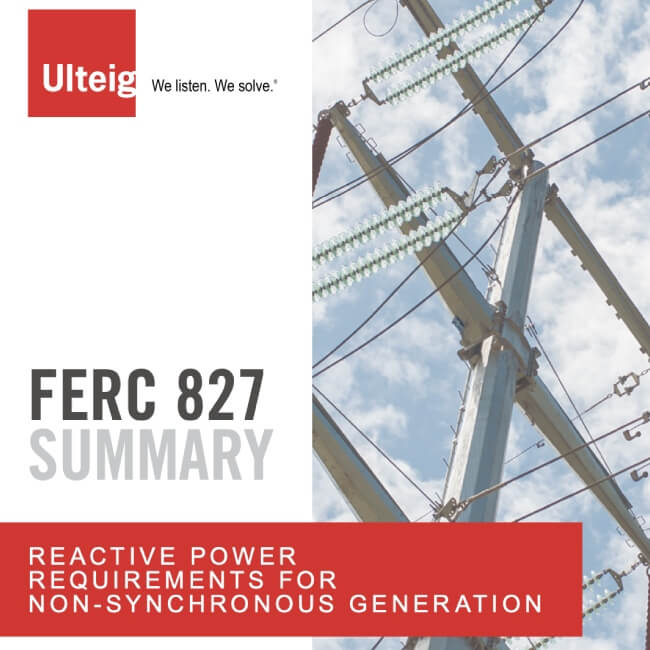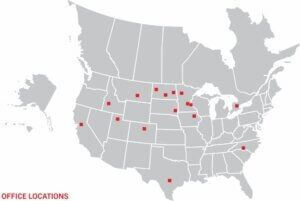FERC 827

July 9, 2021
FERC 827 Summary
REACTIVE POWER REQUIREMENTS FOR NON-SYNCHRONOUS GENERATION
FERC ORDER NO. 827, RELEASED ON JUNE 16, 2016, CHANGES THE LANGUAGE THAT GOES INTO THE STANDARD INTERCONNECTION AGREEMENT (IA) FOR GENERATING FACILITIES. THE REVISED STANDARD LANGUAGE IS BELOW
9.6.1.2 Non-Synchronous Generation. Interconnection Customer shall design the Large Generating Facility to maintain a composite power delivery at continuous rated power output at the high-side of the generator substation at a power factor within the range of 0.95 leading to 0.95 lagging, unless the Transmission Provider has established a different power factor range that applies to all non-synchronous generators in the Control Area on a comparable basis. This power factor range standard shall be dynamic and can be met using, for example, power electronics designed to supply this level of reactive capability (taking into account any limitations due to voltage level, real power output, etc.) or fixed and switched capacitors, or a combination of the two. This requirement shall only apply to newly interconnecting non-synchronous generators that have not yet executed a Facilities Study Agreement as of the effective date of the Final Rule establishing this requirement (Order No. 827).
This language will be standard in IAs for all projects that have executed a Facilities Study Agreement on or after October 14, 2016. The three primary changes the new standard creates are:
1. Projects are required to maintain reactive power capability at the high side of the project’s collector substation. This is different from past projects which have had to maintain this reactive power capability of +/- 0.95 at the project’s Point of Interconnection (POI).
2. Projects are required to have a dynamic power factor range of +/- 0.95. While the IA standard language is ambiguous, the full FERC 827 document includes discussion on the reasoning behind these new requirements. Ulteig’s interpretation is that the dynamic capability must be met with the generators themselves and/or a dynamic reactive power device installed at the substation. Switched capacitor banks can only be used to offset system losses.
3. Projects are required to achieve a +/-0.95 power factor range for all output levels above 0 MW, as clarified in FERC Order No. 827 section III.C.
WHAT MAKES ULTEIG DIFFERENT?
From global energy producers to locally funded cities and private developers to government agencies, the clients we serve encompass a broad range of relationships and projects. Find out why Ulteig is a leader in the engineering industry.
Contact Us
